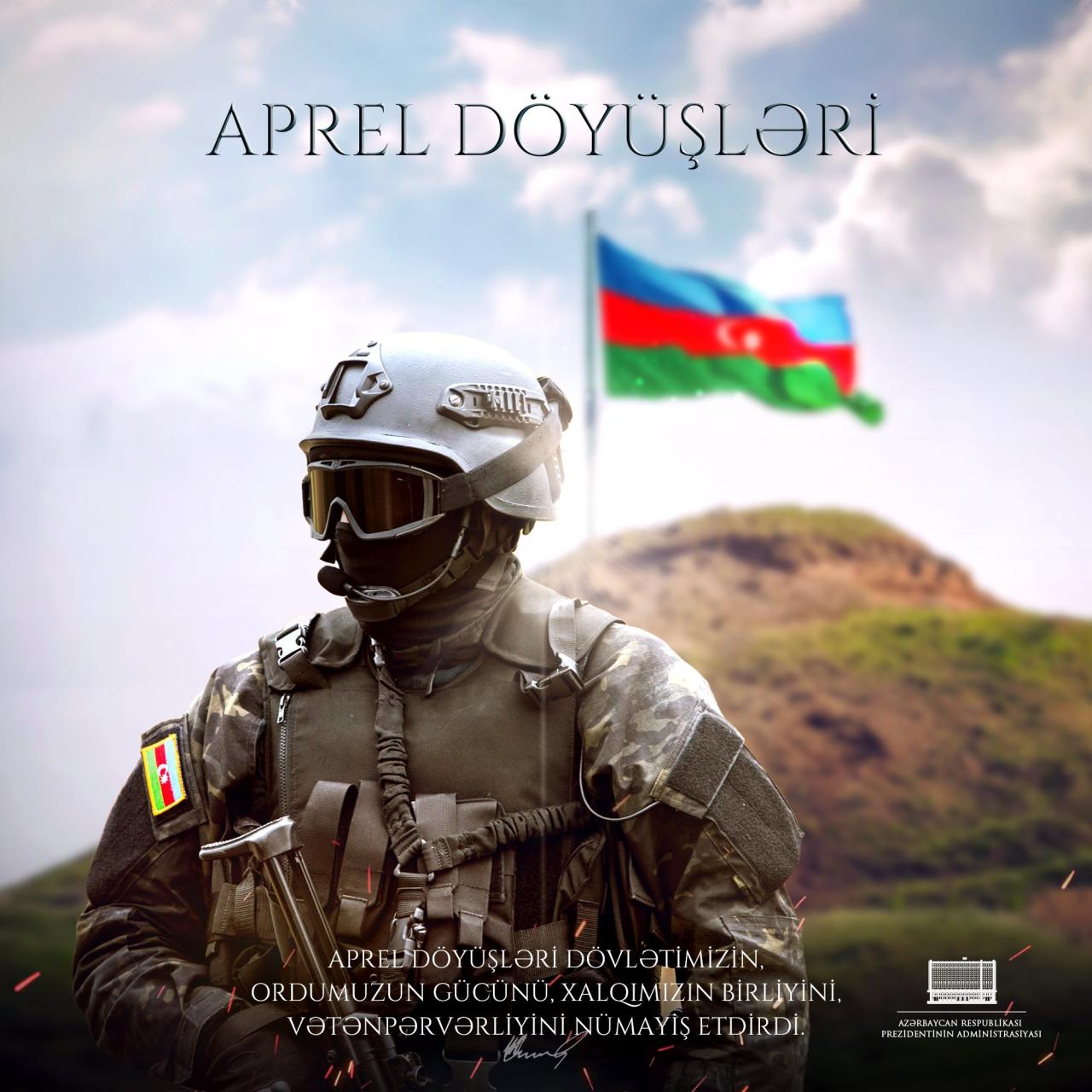Azerbaijan marks anniversary of April War

By Akbar Mammadov
The country marks the fourth anniversary of Azerbaijani army’s victory in April 2016 clashes.
“The April wars demonstrated the strength of our state and our army, the unity and patriotism of our people”, President Ilham Aliyev wrote in a post on his official Facebook page.
April War, or a four-day war, started on April 2 when the frontline positions and settlements of Azerbaijan came under heavy artillery fire by the Armenian armed forces.
Six civilians were killed, including two children aged under 16, and 26 people were injured as a result of shelling of Azerbaijan’s settlements located along the line of contact by Armenia. Numerous public and private facilities, including civil infrastructure, were severely damaged as a result of the offensive, 232 houses, 99 power transmission line poles, three electric power substations, kilometers of water and gas pipes were destroyed.
The Armenian Armed Forces launched the guided-missiles at social institutions, including schools, hospitals and places of worship. Large-caliber artillery shells fell during the prayer service in one of the mosques.
The battles resulted in the victory of the Azerbaijani Army. Some positions in the direction of the heights around Talysh village of Tartar region, Lalatapa height of Jabrayil region and Jojug Marjanli, Gulustan village of Goranboy region and Madagiz village of Tartar region were liberated. Thus, the myth of criminal Armenian leaders about impassable Armenian trenches was destroyed.
Armenian armed forces suffered heavy losses in these battles. According to Azerbaijani Defense Ministry’s information, more than 320 Armenian soldiers were killed and over 500 Armenian servicemen were wounded. About 30 tanks and other armored vehicles, more than 25 artillery pieces were destroyed, the headquarters and main military units in the Madagiz settlement were destroyed. Aghdara-Madagiz, Jabrayil roads in the direction of control was obtained.
On April 4, the Armenian army again attacked Azerbaijani positions on the frontline, mainly in the direction of Aghdara-Tartar and Khojavend-Fuzuli, in order to return the lost positions, and intensively fired on our settlements near the line of contact. Azerbaijan’s training units hit the headquarters of the enemy's military base in the strategically important settlement of Madagiz and the bus carrying Armenian volunteers.
During the operation, the reserve forces that the Armenian armed forces wanted to mobilize from Aghdara, Madagiz and other settlements were destroyed by the Azerbaijani units with preventive strikes.
Attacks on the adversary’s firing points and artillery installations, as a result of appropriate measures taken by Azerbaijan’s reconnaissance teams, in the north around the Talish settlement, which could pose a threat to Goranboy region and Naftalan city, and in the south along the Horadiz city and Araz River to protect some villages of Jabrayil region from the adversary’s threat and strategically important areas around it were liberated.
New positions were established and engineering and fortification measures were carried out in the territories liberated by the Azerbaijani units.
After the April clashes, in May, the presidents of Armenia and Azerbaijan met in Vienna with the participation of officials from the OSCE Minsk Group co-chairing countries, and on June 20, trilateral talks were held in St. Petersburg with the participation of the Russian president. During the meetings, an agreement was reached on strengthening confidence-building measures in the conflict zone, establishing mechanisms to investigate incidents, and expanding the office of the OSCE Chairman-in-Office.
In fact, it is no secret why Armenia provokes the front every time: the criminal regime constantly aggravates the situation on the front on the eve of negotiations on the settlement of the conflict, thereby trying to divert the minds of its people from the socio-political and socio-economic crisis.
Azerbaijan mutually agreed to suspend military operations, thus demonstrating once again its preference for a peaceful solution to the conflict.
The April battles showed the strength of the Azerbaijani Army and its readiness in case of the resumption of a war.
Azerbaijan and Armenia are locked in a conflict over Azerbaijan’s Nagorno-Karabakh breakaway region, which along with seven adjacent regions was occupied by Armenian forces in a war in the early 1990s. More than 20,000 Azerbaijanis were killed and around one million were displaced as a result of the large-scale hostilities.
The OSCE Minsk Group co-chaired by the United States, Russia and France has been mediating the Armenian-Azerbaijani conflict since the signing of the volatile cease-fire agreement in 1994. The Minsk Group’s efforts have resulted in no progress and to this date, Armenia has failed to abide by the UN Security Council resolutions (822, 853, 874 and 884) that demand the withdrawal of Armenian military forces from the occupied territories of Azerbaijan.
--
Akbar Mammadov is AzerNews’ staff journalist, follow him on Twitter: @AkbarMammadov97
Follow us on Twitter @AzerNewsAz
Here we are to serve you with news right now. It does not cost much, but worth your attention.
Choose to support open, independent, quality journalism and subscribe on a monthly basis.
By subscribing to our online newspaper, you can have full digital access to all news, analysis, and much more.
You can also follow AzerNEWS on Twitter @AzerNewsAz or Facebook @AzerNewsNewspaper
Thank you!
